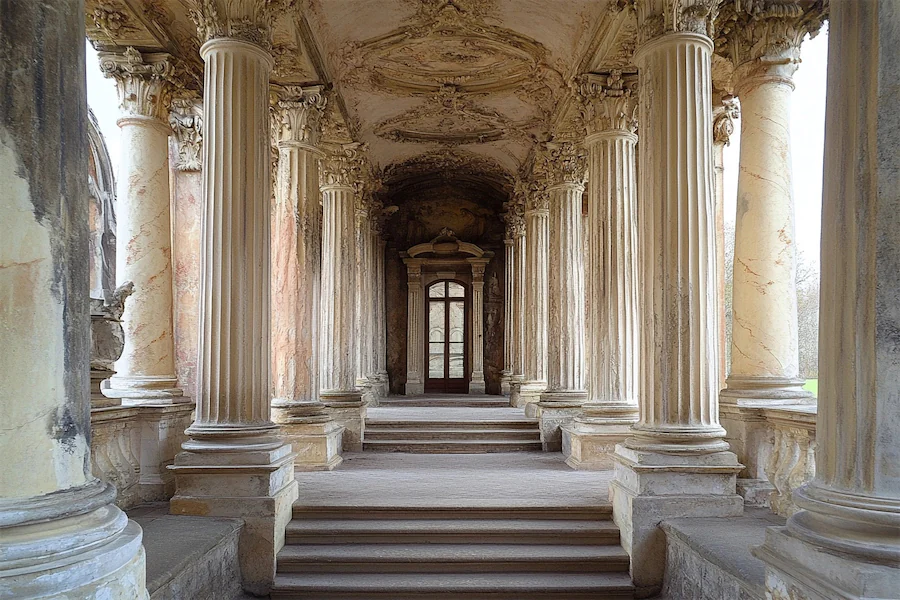Baroque columns are a defining feature of Baroque architecture, which emerged in late 16th-century Italy and spread across Europe. Characterized by their dramatic, ornate, and dynamic designs, these columns were instrumental in conveying the grandeur and emotional intensity that Baroque architecture sought to evoke.
History and Origins of Baroque Columns
The Baroque architectural style developed as a response to the austerity of the Protestant Reformation, with the Catholic Church commissioning elaborate structures to inspire awe and reaffirm its influence. Columns during this period evolved from the classical orders, incorporating intricate decorations and dynamic forms to enhance the theatricality of architectural spaces.
Key Features of Baroque Columns
Baroque columns are distinguished by several characteristic features:
- Solomonic Columns: Also known as twisted or spiral columns, these feature a helical shaft that creates a sense of movement and energy. A notable example is Bernini’s Baldachin in St. Peter’s Basilica, Rome, where colossal bronze Solomonic columns support the canopy over the altar.
- Estipite Columns: Predominantly found in Spanish and Latin American Baroque architecture, these columns have an inverted, tapered form, often resembling an elongated pyramid or obelisk. They are typically adorned with elaborate carvings and serve as both structural and decorative elements.
- Ornate Capitals and Bases: Baroque columns often feature highly decorative capitals and bases, incorporating motifs such as acanthus leaves, cherubs, and other intricate carvings, contributing to the overall opulence of the structures.
Applications of Baroque Columns
Baroque columns were integral to various architectural structures, including:
- Churches and Cathedrals: Columns were used to support arches and domes, creating expansive and dramatic interior spaces. The use of Solomonic columns in altarpieces and baldachins added a sense of movement and grandeur to sacred spaces.
- Palaces and Public Buildings: In secular architecture, Baroque columns conveyed power and prestige. Grand staircases and facades often featured these columns to create impressive entrances and focal points.
Considerations When Choosing Baroque Columns
When incorporating Baroque columns into architectural designs, consider the following:
- Aesthetic Intent: Baroque columns are highly decorative and can dominate a space. They are best suited for designs aiming to evoke drama, movement, and emotional intensity.
- Craftsmanship: The intricate designs require skilled artisans to execute faithfully. Ensuring access to craftsmen capable of achieving the desired level of detail is essential.
- Historical Context: Baroque columns carry strong historical and stylistic connotations. Their use should align with the overall architectural narrative and context of the project.
Conclusion
Baroque columns exemplify the grandeur and dynamism of Baroque architecture. Their elaborate designs and innovative forms continue to inspire and influence architectural practices, offering a means to infuse spaces with historical richness and dramatic flair.
